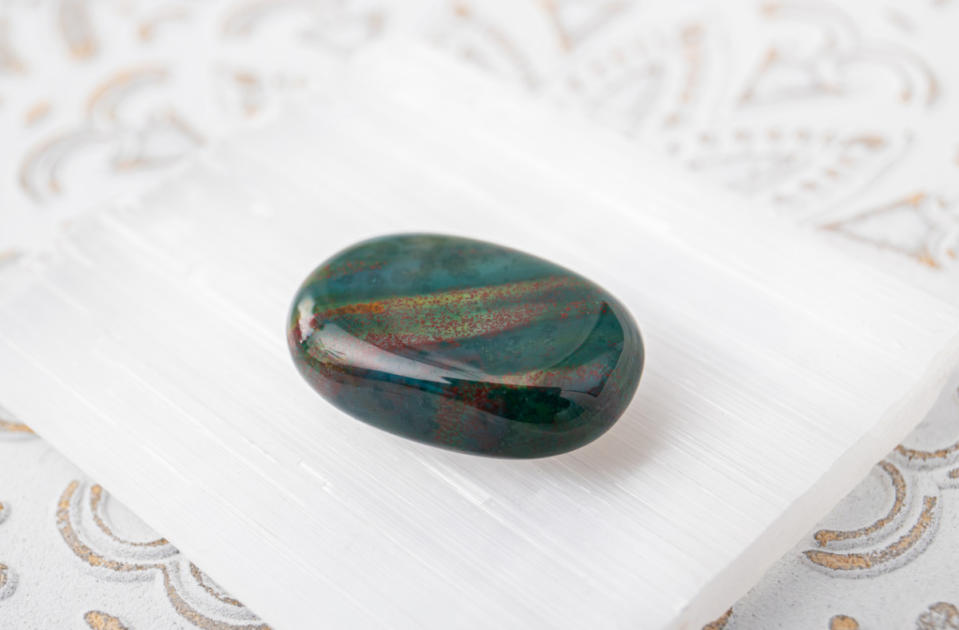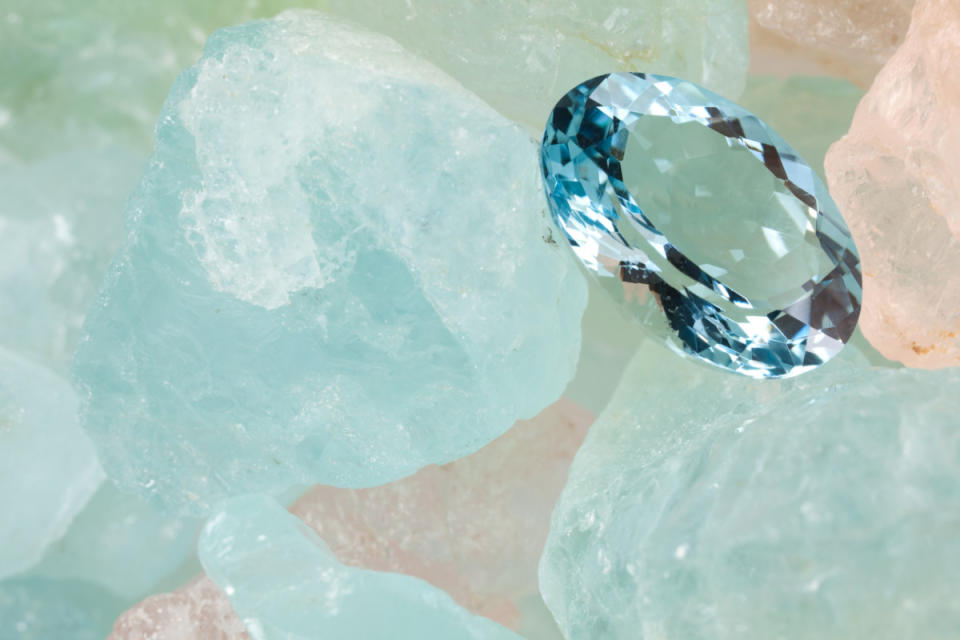People Born in March Actually Have 2 Birthstones—Find Out What They Are and the Meaning Behind Each Stone

Aquamarine stones for March birthstone
As winter’s chill gives way to spring’s optimism, March babies have not one but two glittering birthstone options: aquamarine and bloodstone. At first glance, aquamarine and bloodstone appear quite different. Aquamarine's color often makes people think of the sea and ocean voyages. Bloodstone's dark green hue with red spots evokes images of ancient warrior amulets and mystical healing stones. But despite their different looks, both crystals have a reputation for bringing good luck and protection to those who wear them.
Delve deeper to uncover the special history and hidden strengths of your March birthstones. Will you identify more with aquamarine’s blue soothing waves or bloodstone’s earthy vitality? Read on to learn what makes these gems uniquely suited for those born under March’s changeable skies.
Related: Here’s Exactly What Your Month's Birthstone Says About Your Personality

iStock
What Is the Traditional Birthstone for March?
Bloodstone.
According to Matt Harris, a Gemological Institute of America graduate, member of the American Gem Trade Association, and owner of Matt Harris Designs: "Bloodstone was referenced in an 1870 Tiffany & Co. poem as the traditional March birthstone."
He goes on to explain why bloodstone (AKA heliotrope) was later rejected as the official March gem: "In 1920, the National Association of Jewelers adopted their ‘modern’ birthstone list, which contained only transparent gems. Maybe that’s why aquamarine is much more recognized... who doesn't like a sparkly gem?"

iStock
What Is the Modern Birthstone for March?
The modern March birthstone, replacing bloodstone, is aquamarine.
As gemologist Sacha Jarmon, founder of LOVE SARO, describes: "Aquamarine AKA 'The Stone of Serenity' is referred to as the 'modern' birthstone for March."
Jared Silver of Stephen Silver Fine Jewelry is a fan of the stone. “Aquamarines make a practical choice for everyday wear, since as beryl gems, they rank high on the hardness scale, just behind diamonds, sapphires, and rubies.”
March Birthstone Color
The aquamarine color ranges from a light, sky blue or blue-green to a deep blue at times, while bloodstone's color typically appears as a deep, rich green with red speckles throughout.
Is the March Birthstone Rare?
“Aquamarine and bloodstone are not traditionally considered rare, but both are wonders of the mineral kingdom,” shares Jarmon.
Harris notes that aquamarine that’s deep blue is a bit more rare, but “won't be as expensive per carat as would be a diamond, emerald, sapphire, ruby or alexandrite.”
Related: What Is Your Birth Flower? Find Out the Meaning Behind the Blooms for Each Month
Aquamarine Meaning and History
The cool blue tones of aquamarine have long been associated with shimmering ocean waters and sailors' tales of mermaids' treasures. As Jarmon describes, "The name aquamarine is derived from the Latin meaning 'water of the sea.' In ancient folklore, it was known as a treasure of mermaids and used as a talisman by sailors for good luck, fearlessness and protection."
True to these maritime myths, the aquamarine embodies a peaceful tranquility, as calming as a breezeless sea at high noon.
Jarmon explains, "Aquamarine can help center one's energy by easing worries and soothing the mind." Enhancing communication is another signature quality, as she notes its link to the throat chakra: "It is connected to the throat chakra, assisting with articulate expression of thoughts and feelings."
The blue glow of aquamarine can evoke a sense of harmony, as Jarmon says it "exemplifies the feeling of tranquility and bliss, as if floating on water."
So, if you need stability through March’s ups and downs, aquamarine's clarity and calm make it the perfect amulet!
Where Is Aquamarine Found?
Aquamarine is found all over the world. Jarmon notes aquamarine deposits exist in Brazil, Pakistan, Afghanistan, Australia, Africa and the United States.
Bloodstone Meaning and History
The bloodstone's rich green hue is set off by fiery red speckles reminiscent of droplets of blood—hence its long association in lore with healing blood ailments and mystical properties like inducing the sun to turn blood-red in the sky. As Jarmon describes: "Bloodstone is also referred to as Heliotrope, from the Greek meaning 'sun turner.’ In the Middle Ages, the red spots found in bloodstone were thought to be spots of Christ's blood, attributing sacred healing powers to the stones."
True to these legends, bloodstone is believed to purify and renew vitality. Jarmon elaborates on its restorative qualities: “Bloodstone is known to dispel negative energy from the aura to bring one’s subtle energies back into balance and harmony. Bloodstone grounds one fully in the body, supporting physical strength through its connection to the root chakra."
So while aquamarine soothes like a balmy ocean breeze, bloodstone invigorates like an earthy forest walk. As Jarmon explains: "This stone offers strength and courage in times of adversity."
Related: What Are 'Chakras,' Exactly? Here Are the Benefits of Balancing Your Chakras for More Inner Peace
Where Is Bloodstone Found?
According to Jarmon, bloodstone deposits exist in India, China, Brazil, Australia and The United States.
Now that you know the rich history and lore around these two mystical March gems, which will you choose to celebrate your birthday month? The soothing tranquility of aquamarine or the protective vitality of bloodstone?
Or maybe you don’t have to choose? As Silver says: “There is certainly a place for both gems in the world of birthstones. Jewelry lovers like to delve into the symbolism of their birthstone, and each gem offers different aesthetic and symbolic layers and textures that can be appreciated.”
Next Up: We’re Diving Into Everything There Is To Know About the Water Signs of the Zodiac
